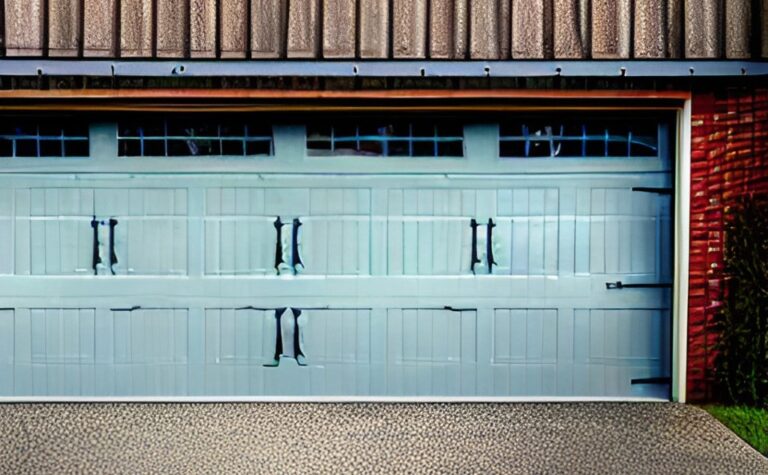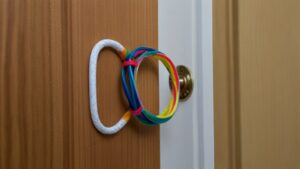Discovering that you’ve mistakenly sprayed WD-40 on your garage door rollers and tracks can be frustrating. While WD-40 is a versatile lubricant, its use on these specific parts can cause more harm than good. However, fear not! In this article, we will explore the best methods to undo the effects of WD-40 on garage door rollers and tracks, ensuring your door operates smoothly once again. So, let’s get started!
Understanding the Impact of WD-40 on Garage Door Rollers and Tracks
WD-40 might seem like a quick fix to eliminate squeaks and enhance smooth operation, but applying it to rollers and tracks often exacerbates the problem. The lubricant is not designed for this specific purpose, and its composition can attract dirt and grime, causing buildup and reducing the door’s functionality. To reverse the effects, it is essential to take a systematic approach.
Step 1: Gather Necessary Tools
Before starting the remedial process, it is advisable to gather the required tools to ensure a hassle-free experience. The tools you will need include:
1. Screwdriver set
2. Clean cloth or rag
3. Mineral spirits or a similar solvent
4. Water
5. Silicone-based lubricant
Step 2: Remove Affected Parts
To effectively undo the impact of WD-40, you need to remove the affected rollers and tracks from the garage door. This allows for a thorough cleaning and inspection. Follow these steps:
1. Disconnect the garage door opener from the power source.
2. Using a screwdriver, remove any screws or bolts securing the rollers and tracks.
3. Gently slide out the rollers and tracks, taking care to note their original positions to promote correct reassembly.
Step 3: Clean the Rollers and Tracks
Proper cleaning is crucial to eliminate the WD-40 residue and any accumulated dirt. The following approach can help restore optimal functionality:
1. Apply mineral spirits or a similar solvent to a clean cloth.
2. Wipe down the rollers and tracks, ensuring thorough removal of the WD-40 residue.
3. Rinse the components with water to eliminate any remaining solvent or debris.
4. Dry the rollers and tracks completely with a clean cloth.
Step 4: Lubricate and Reassemble
Once the rollers and tracks are cleaned, it is crucial to choose the right lubricant to ensure smooth operation. Follow these guidelines when reassembling the parts:
1. Apply a silicone-based lubricant specifically formulated for garage door use.
2. Lubricate the rollers, hinges, and bearings while avoiding excessive application.
3. Carefully reassemble the rollers and tracks, ensuring they are properly aligned according to their original positions.
4. Tighten any loose screws or bolts to secure the components in place.
Step 5: Perform Routine Maintenance
To prevent similar issues in the future, it is essential to establish a regular maintenance routine for your garage door. Taking a proactive approach will extend its lifespan and reduce the need for frequent repairs. Here are a few maintenance tips:
1. Clean the rollers and tracks periodically, using a non-abrasive cloth.
2. Lubricate the moving parts with a silicone-based spray designed for garage doors.
3. Remove debris and dirt from the tracks to ensure smooth operation.
4. Conduct visual inspections to identify worn-out or damaged components and replace them promptly.
5. Seek professional assistance for complex repairs or issues beyond your expertise.
FAQs: Addressing Common Concerns
Q1. Can I use WD-40 on any other parts of my garage door?
A1. Yes, WD-40 can be beneficial for other components like locks, hinges, and tracks; however, it must be used sparingly and wiped clean after application.
Q2. How often should I clean and lubricate my garage door?
A2. Ideally, you should perform maintenance tasks every three months, but the frequency may vary depending on usage and environmental conditions.
Q3. What type of lubricant should I use for ongoing maintenance?
A3. It is recommended to use a silicone-based lubricant specially formulated for garage doors, as it provides long-lasting protection without attracting dirt.
Q4. Can I use household cleaners instead of mineral spirits for cleaning?
A4. It is not advisable to use household cleaners, as they may contain chemicals that could further damage the rollers and tracks. Stick to mineral spirits or a similar solvent.
Q5. Should I seek professional help if I’m unsure about the process?
A5. If you are uncomfortable or unsure about handling garage door maintenance, it is always best to consult a professional for proper guidance and assistance.
Undoing the effects of WD-40 on your garage door rollers and tracks might seem daunting, but with the right approach and tools, it can be easily resolved. By following the steps outlined in this article and establishing a routine maintenance plan, you can ensure smooth and reliable operation of your garage door. Remember, proper care and attention will extend the lifespan of your door, giving you peace of mind and convenience in the long run.

